World War One: Why the Army took over Charles's chocolate factory
- Published
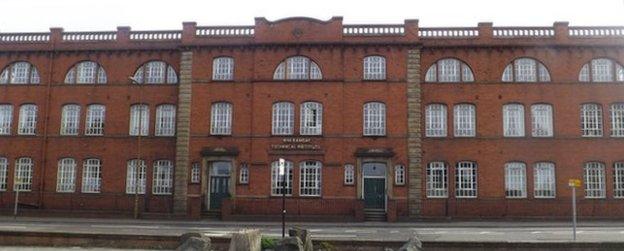
The former chocolate factory became a technical college and is now housing
Scotland's first chocolate factory aroused suspicion at the outbreak of World War One. Why was it so strongly-built and why did it employ so many Germans? The authorities were called to investigate.
In 1905, when Charles William Schulze built his factory to make luxury chocolate products in the Belgian style, it was a first for Scotland.
Schulze, who was originally from Braunschweig in Germany, had been a successful cloth merchant in Galashiels for many years before he set up his Continental Chocolate factory in Portobello near Edinburgh.
Like the product he was making, the building itself - three storeys high with exterior walls of red firebrick - was also a new departure.
Local historian Archie Foley told BBC World War One at Home: "Charles and his sons did not only want to bring an innovative product to be manufactured in Portobello, they actually employed a very radical and innovative building design.
"The building is one of the first half-dozen reinforced-concrete multi-storey buildings in Scotland.
"The foundation is concrete, reinforced with ferro-concrete, and it is 10ft to 15ft thick and everything is supported on iron pillars and beams."
Residents were astonished at the thickness of the walls, the floors and the ceiling as they watched the building being put up, says historian and author Margaret Munro.
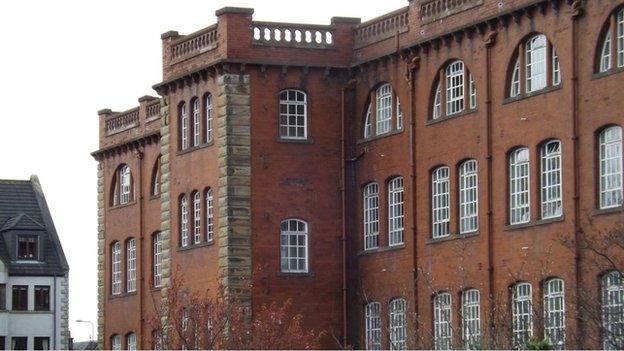
The redbrick factory was one of the first to be built with reinforced concrete
She says: "They were told that this was necessary because it was built on clay soil and there would be very heavy machinery in the building."
Full production did not get under way until 1911, when a number of skilled workers had been imported from Germany.
The Schulze family, Charles and his two Scottish-born sons, brought in Germans to train the locally-hired staff, who were mainly women.
There were also German families working in Portobello at that time because the two local glass manufacturers had brought them in for their expertise in bottle-making.
Soon after war broke out in 1914, the Scottish Office issued instructions that all Germans, Austrians and Hungarians of military age were to be arrested.
Under the Alien Restriction Order, all Germans over the age of 45 were to be expelled.
"So at one fell swoop all the men from these families were taken away or told to leave Edinburgh," says Ms Munro.
A wave of anti-German hostility engulfed Britain and communities became paranoid about spies and enemy agents.
Inevitably, attention focused on the Continental Chocolate factory and its large, extremely strong-built premises, located at an important road junction, and next to two railway lines.
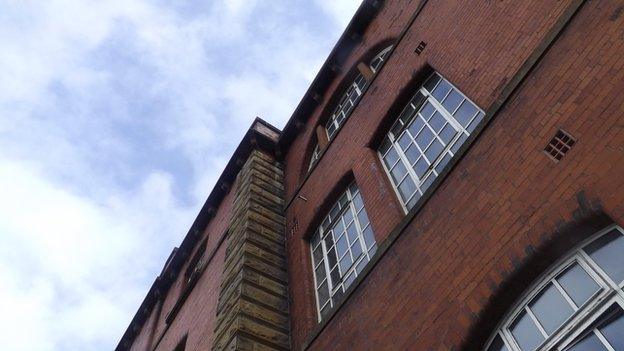
The solid structure of the factory aroused suspicion among locals
It was well known the owners were German and Archie Foley says local people began to speculate that the specially-strengthened floors were actually to bear the weight of heavy guns that could threaten Leith Docks.
A sort of hysteria gripped the community, the rumours got wilder and the civil authorities were forced to act.
Edinburgh police entered the factory on 16 October 1914 and carried out a thorough inspection.
Three days later The Scotsman reported: "Nothing of a compromising character was found. The military authorities are also engaged in an inquiry as to the remarkably solid character of the concrete foundations and the great strength of the building."
The next day The Scotsman reported that the "military authorities have come to the conclusion that there is no occasion for them to take action concerning the building".
Although some employees had been removed and taken to Edinburgh by the police for being enemy aliens of military age, the decision must have brought relief to the Schulzes.
But this was to prove short-lived.
Everyone had assumed that Charles Schulze, the owner of the building, who had lived in Scotland for about 50 years, was a naturalised British subject.
But it became clear that he had never applied for British citizenship until after the war broke out and then he was told it was too late.
Schulze had to remain a German national and was made to register with the police in Galashiels as an enemy alien.
On 31 October, The Scotsman reports: "The now notorious German chocolate factory was yesterday taken over by the military.
"On inquiry it was confirmed that the factory has been assigned to a territorial detachment of the Royal Engineers who had recently been under canvas in the vicinity."
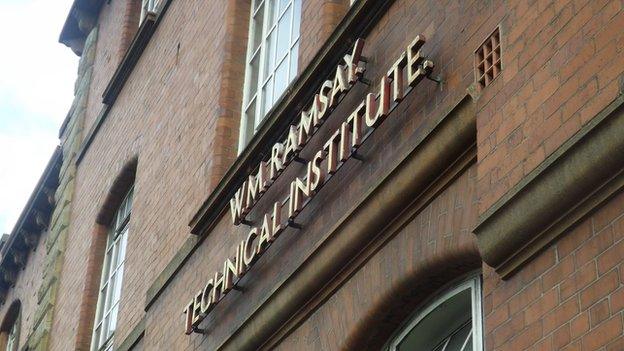
Soon after the war the factory became the Ramsay Technical Institute
For the rest of the war, the chocolate factory became a billet for troops.
It was taken over by the military under the Defence of the Realm Act.
Schulze received a small amount of compensation for this, but as the factory owner he was still responsible for paying rates and taxes to the city of Edinburgh.
"Apart from his financial losses he suffered great personal loss," says Ms Munro.
"Two of his sons were killed in action."
Both were fighting with British forces against the Germans.
His son, William Rudolph, serving as private in the Cameron Highlanders, was killed in action on 18 July 1916.
Hugh Lees Schulze, a lieutenant in the Dorset Regiment, was killed on 29 October 1918, just two weeks before the armistice.
After the war, the chocolate factory was converted into a technical college and in the 1990s it was turned into flats.
It has a category A listed building status because it is of national significance as one of the few works by E P Wells, the first British holder of reinforced concrete patent.
- Published25 February 2014
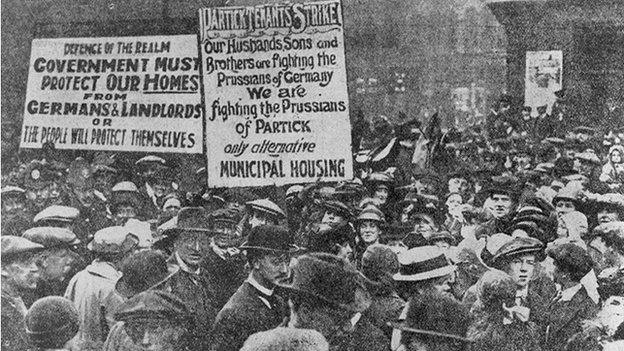
- Published3 March 2014
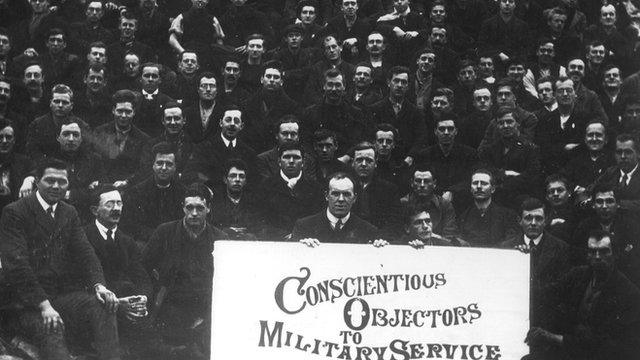
- Published27 February 2014
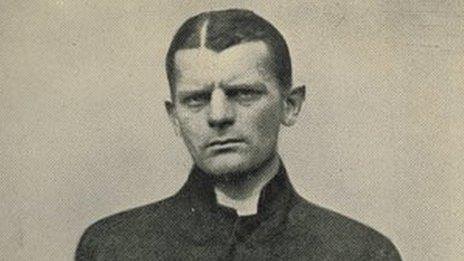
- Published24 February 2014
